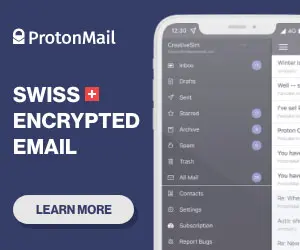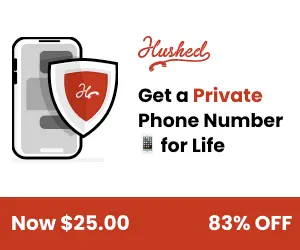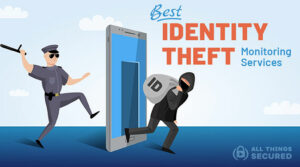Statistics show that more than one-third of Americans have fallen victim to identity fraud. There’s a high probability that you could be next, so it’s worth taking time to take preventative measures to protect your personal data and online identity. In this article we’re going to uncover the 7 types of identity fraud to look out for and 11 ways you can prevent it.
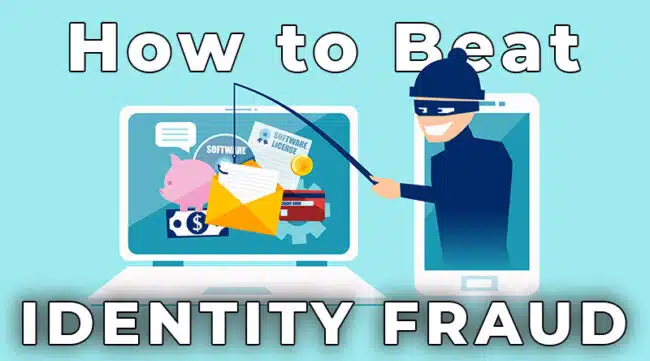
Key Takeaways
- Identity fraud is rampant. It can take many forms, like account takeovers, credit card fraud, tax fraud, and more.
- Preventing identity fraud starts with protecting personal information, using strong passwords with two-factor authentication, scrubbing data from the internet, and being wary of phishing scams.
- Enabling a credit freeze with major credit bureaus, using digital wallets, and securing your physical mail can further safeguard your identity.
- Regularly monitor your credit reports, financial statements, and quickly report any suspicious activity to mitigate potential fraud damage.
To understand how to beat identity fraud, you need to understand not only what to watch out for but also how to prevent fraud and report identity theft once it’s occurred.
And remember: this isn’t simply about your personal information. Identity fraud includes protecting your financial accounts, your tax refund, your login credentials, and even all the same data for your family members.
Let’s start with the most common types of identity theft to watch out for.
7 Common Types of Identity Theft to Watch For
There isn’t a single kind of identity thief. It comes in all shapes and sizes and thieves can be incredibly creative in how they play the whole identity fraud game. We’re going to dive deeper into the following types of identity theft:
- Account Takeover
- Debit/Credit Card Fraud
- Tax Identity Fraud
- Identity Theft of Minors
- Medical Data Theft
- Mail Identity Theft
- Driver’s License Theft
Account Takeover (Brute Force or Stolen Credentials)
The most common type of identity theft is known simply as the “account takeover”. This is the process by which an attacker gains access to one of your accounts and uses that account to impersonate you or to authorize transactions on your behalf.
It could be as simple as a social media account or as frightening as your bank account.
In either case, this kind of takeover can be accomplished through brute force (guessing a password over and over again) or via stolen credentials. The latter is usually part of some kind of data breach.
What to Watch For
If you start getting messages from friends and family asking about random messages they’ve received from you or requests for money, you should immediately reset the passwords to your social media and banking accounts. It’s also worth setting up 2FA.
Debit or Credit Card Fraud
When most people think of identity fraud, they’re usually thinking about some kind of debit card or credit card fraud. This could play out in several different ways:
- Stolen credit card number: Somebody has been able to swipe your card number via a card reader or by copying all the information down.
- Opening new lines of credit: Somebody has been able to steal your social security number or other identification number and use it to open a new credit card or line of credit.
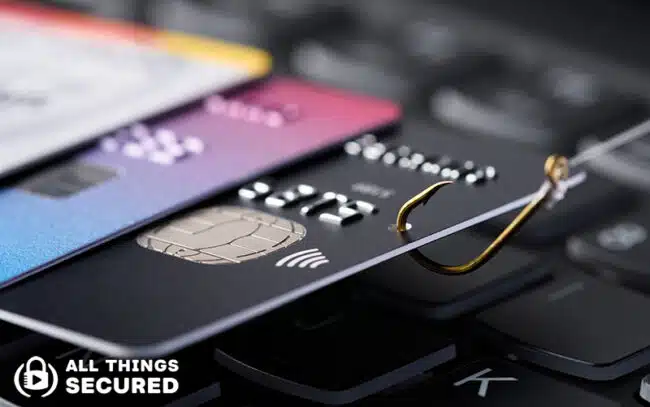
In both cases, your personal credit is at risk when somebody uses it for identity fraud.
This may make it much harder for you to apply for personal loans or credit cards in the future if you don’t prevent or stop identity thieves.
What to Watch For
Balance your bank account using monthly financial statements to make sure you spot any unauthorized transactions. You can also run your credit reports to see if anything weird comes up.
Tax Identity Fraud
A growing form of identity fraud involves your tax return. Imagine filing for your annual refund only to find that you get a letter from the government saying that your return has already been filed and the money sent. Yikes!
The IRS has taken many steps to prevent identity fraud of this kind, but it requires you as the taxpayer to take action. In addition to your social security number, you can apply for an IP PIN (Identity Protection PIN) that must be amended to your return to validate it.
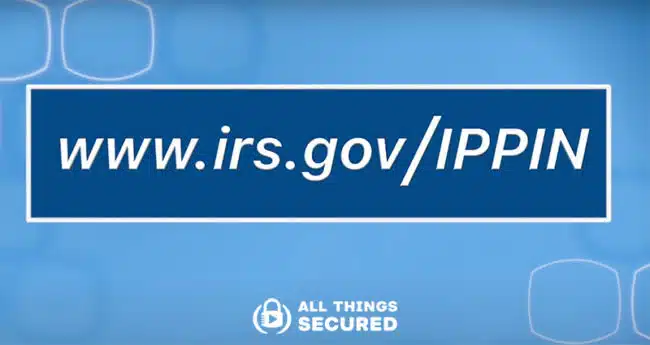
What to Watch For
With a tax return identity fraud, you’ll usually get weird notices from the IRS in your email inbox or via post. Don’t ignore these messages!
Identity Theft of Minors (Under 18)
It’s an unfortunate reality that many of our kids turn 18 only to find that their identity has been trashed before they’ve had a chance to build it. Sometimes this is fraud is perpetrated by complete strangers, but the sad reality is that many children are taken advantage of by family members.
Even if your child has never opened a bank account or had a credit card, they are still open to become victims of identity fraud.
What to Watch For
Unfortunately, most people don’t detect fraud until it’s too late. In this case, the best defense is preventative. Monitor your kids’ credit reports, secure their social security card, and place a freeze on their credit until they need it.
Medical Data Theft
It’s weird to think that somebody might want to steal your medical identity, but it happens often in cases where the identity thief may not have insurance to cover their medical expenses.
Using your medical identity may not seem harmful at first, but the risk is that your medical history may get mixed up with thieves, causing potential problems with your healthcare down the road.
What to Watch For
If you start to receive claims or hospital bills for doctor’s visits that you never made, you should be concerned. This could come from either the hospital or your insurance provider.
Mail Identity Theft
Your mailbox is unfortunately very unprotected. This kind of identity theft could manifest in several different ways:
- Stolen Mail: Thieves may steal your mail to try to gather information about you that can be used for tax fraud, credit card fraud, or other forms of identity theft.
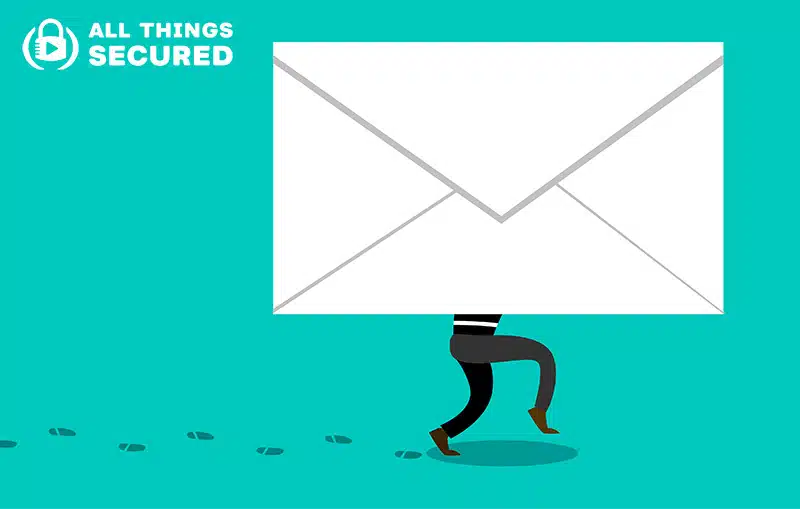
- Change of Address: By changing your address, attackers may be able to assume your physical domicile and use that to impersonate you in other ways.
What to Watch For
Always be alert to what you receive (or don’t receive) in the mail. If you start getting a change of address notice, be on alert and talk with the post office.
Driver’s License Identity Theft
While not nearly as common, driver’s license identity theft is when an attacker can steal your license, alter the photo or information, and then use it (or sell it) as fake identification. Any traffic violations or misdemeanors using this ID will appear on your record, not the attackers.
What to Watch For
Be sure that you’ve secured your driver’s license and always have it with you. Report a lost or stolen license immediately.
11 Ways to Beat Identity Fraud (before it hurts)
Although it’s sobering to consider all of how you can experience a stolen identity, there is hope! Some of the best steps you can take are preventative, which means that you can stop identity fraud before it even starts.
Below you’ll find eleven ways how to beat identity fraud, which are just a starting point. These won’t keep you 100% safe, but it will keep you from being the most vulnerable and easy to attack.
Protect Your Personal Information
Treat your personal information – things like your social security number, your date of birth, your financial account info, and more – as valuable and sensitive information.
We are asked for our information daily and sometimes it’s easier to simply hand it over instead of fighting to protect it. Most of us don’t like saying “no” to people, yet this is what we need to learn to do. When it comes to protecting your personal information, you should:
- Secure Your Personal Computer: Be sure that your computer is secured with a strong password and that your hard drive is encrypted.
- Learn to say NO: Avoid giving out your personal information over the phone or the Internet unless you are the one who initiated contact with the company or individual.
- Mask Your Information: Instead of giving out your actual phone number, email, or physical address, consider masking your information with a second phone number, a virtual home address, or an email alias.
You can’t do anything about the information that might already be floating around the internet, but you can stop the flow of new data. Preventing future identity theft means protecting your personal information.
Secure Online Accounts (passwords + 2FA)
Strong passwords used to be the key to online security. Not anymore. If you really want to secure your email accounts, accounts with your financial data, or even your work accounts, you need to enable two-factor authentication, often known as “2FA”.
There are different kinds of 2FA you can use, but the most effective is a physical security key like what you get with YubiKeys. When your account is secured with a 2FA key, after you input your user ID and password, you are asked to plug in your security key for an additional layer of authentication.
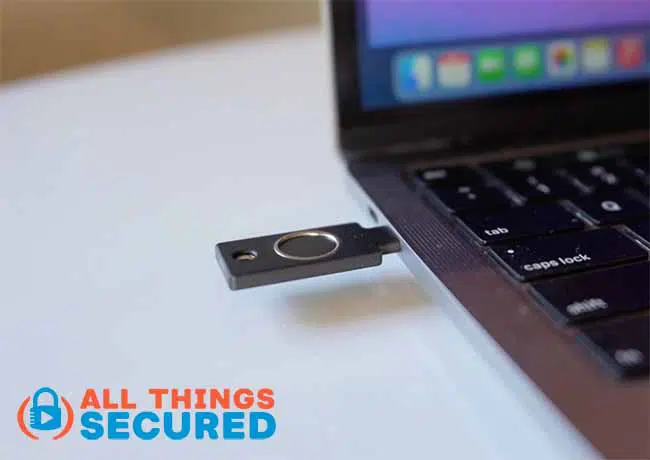
It doesn’t matter if somebody has stolen your login credentials…if they don’t have your physical 2FA key, they will not be able to take over your account. This is a huge step in preventing identity fraud.
Scrub Your Personal Information from the Internet
As we mentioned earlier, it’s great to stop the flow of new personal information on the internet, but what about the personal data that’s already out there?
To beat identity fraud, you’re going to need to scrub as much of your personal information off the internet as possible. That could mean…
- Making Your Social Accounts Private: Go into the privacy settings of your Facebook account, your Instagram account, or any other personal account, and make sure that everything you share and have on your profile isn’t publicly available for anybody to find.
- What about Data Breaches? There’s not much you can do about the information that is on the “dark web”, just make sure that you’re using unique passwords – and even unique email aliases – for all of your logins.
- Scrub Data Brokers: There are numerous data brokers online that scour the web and scrape personal data to be sold to marketers and anybody else who might want to buy access to your phone number, email address, court records, and other info.
Making opt-out requests for all of these data brokers is cumbersome and time-consuming. Using a service like this takes away all of the hassle by making the requests on your behalf – and monitoring to make sure these data brokers honor the takedown request.
Use the code “ATS” to get 20% off:
or for non-US residents
Be Wary of Phishing Scams
Phishing scams and other social engineering scams take advantage of our human curiosity and desire to help, but they’re also an effective method for identity theft. It could be a “click here to claim your prize” kind of email or a message from what looks like a family member asking for a bit of help.
Spotting a phishing scam is harder than it sounds, and even the smartest people get duped sometimes. These phishing attempts come in all shapes and sizes and it’s pointless to list them out because they are constantly being reinvented with creativity.
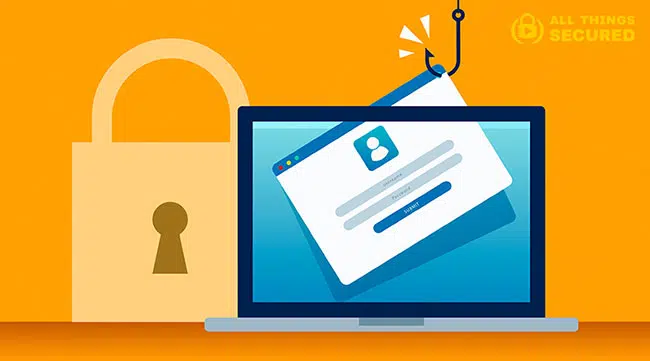
Here are some simple words of advice:
- Always check the “from”: Amazon is never going to reach out to you using a Gmail address and your family member likely won’t use an unknown number.
- Never click links or download unknown attachments: This is very hard to do, but you must resist the urge to immediately click a link or download that attachment. Check the from first, then make sure you can’t type the URL directly into your internet browser instead.
- Always be skeptical: Again, it’s frustrating to feel like you can never trust the internet, but this could save you a lot of headaches.
You need to find ways to authenticate any odd or unexpected messages to make sure they are from a legitimate source. Failure to do so could cost you your information and lead to identity fraud down the line.
Enable a Credit Freeze Immediately
Setting up a credit freeze is probably one of the easiest and most effective ways to protect yourself against identity fraud. A credit freeze is a way to stop credit bureaus from authorizing new credit from any financial entities who request it.
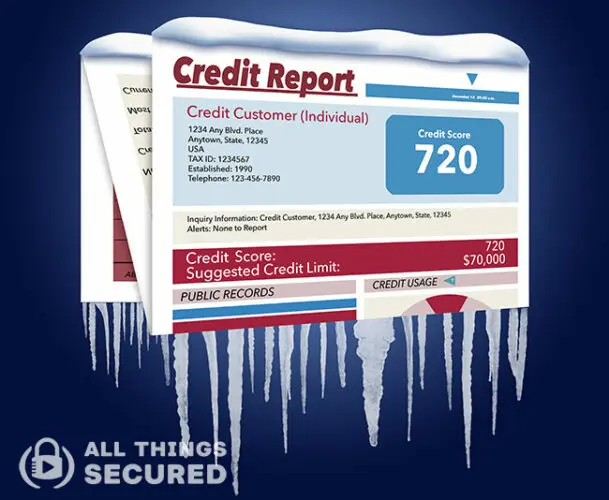
In the US, this means setting up a credit freeze with the three major credit bureaus – TransUnion, Equifax, and Experian. For other countries, you’ll need to search to find out the necessary credit bureau.
Once a credit freeze is in place, it will be extremely difficult for any bad actor to commit fraud by trying to open a new account with credit card companies.
And don’t worry, it’s very easy to thaw a freeze (it takes less than 5 minutes) if you need to get a loan for a car or apply for a new credit card.
Use a Digital Wallet
“Cash is king!” they once said. Then it became credit cards. But the plastic card you keep in your physical wallet often presents its own risks.
Now we have digital wallets, best represented by things like Apple Wallet, Google Pay, and others. Surprisingly, these digital wallets can often help protect you from credit card identity fraud. How?
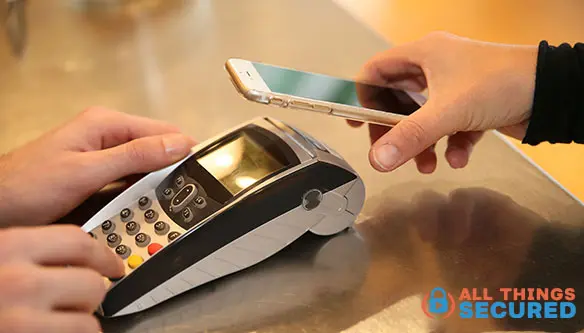
When you use a digital wallet like Apple Pay to “tap” your payment, Apple does not share your actual credit card number with the merchant. They send along a one-time use authorization number for the purchase so that even if that number is stolen, it’s useless. It’s another way of masking your credit card information similar to using a virtual credit card
Protect Your Home Address & Mailbox
Although already mentioned earlier, masking your home address not only protects that personal information, it also keeps sensitive mail from hitting your vulnerable mailbox.
Using a good virtual address company, your mail is sent to a secure sorting facility where it is scanned, encrypted, and uploaded to your digital mailbox. It’s not a foolproof method against identity fraud, but you’ll be surprised at how much better it is to deal with your mail digitally instead of having it all mailed to your home.
Use a Credit Monitoring Service (if needed)
When it comes to all of your financial information, it’s important to monitor your credit report for any anomalies. When looking for a quality credit monitoring service, you want to know what parts of your data they monitor and what kind of insurance they offer.
Credit monitoring services are most useful for those who know that their data is already stolen because they can monitor for future identity fraud and send fraud alerts so you can take timely action.
Check Credit Reports Quarterly (at least)
Not everybody needs a credit monitoring service, but everybody does need to check their credit report. In the US, by law, you are allowed to request a free credit report from each of the three credit bureaus once per year.
This means that at the very least, you can check your report quarterly to make sure there are no new accounts that you never opened.
Regularly Review Your Financials
It’s scary how few people go through and check their banking information every month. So much identity theft could be avoided if people just did this!
Regularly review your financial statements to ensure that you don’t see any kind of identity fraud present.
Take Action on Suspicious Activity
If you suspect that your identity has been stolen or that you’re a victim of fraud, take action immediately! Report the identity fraud to your bank, the Federal Trade Commission, and the FBI.
How might you do that?
Sometimes you just can’t beat identify fraud. It’s not always your fault and you shouldn’t be too hard on yourself. Collect yourself and make sure you follow these next steps.
In case you’ve become a victim of identity theft, here are some of the steps you can take:
- Stay calm! You’re not the first person to experience identity fraud and you will get through this.
- Visit IdentityTheft.gov: For US residents, this website provides a step-by-step breakdown of what you need to do next.
- Call Your Bank: Be sure to let your financial institution know that you’ve experienced identity theft. They’ll be able to put alerts on your account.
